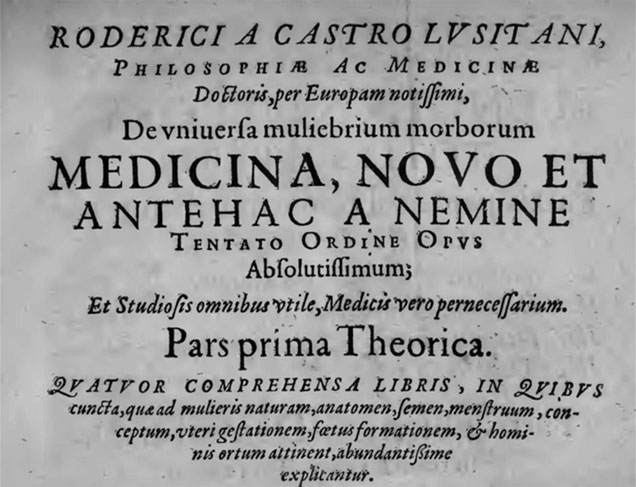Conference P. Fontes da Costa 2019
Palmira Fontes da Costa, “Sex, monsters and hermaphrodites in the Early Modern Period”, in Medical Approaches to Sexual Problems, 1550-1850, 18th February 2019, Institut für Geschichte der Medizin und Ethik in der Medizin, Universitätsmedizin Berlin (invited speaker).
Abstract:
This paper begins by addressing the ways in which deviance in sexual intercourse, complications of the parental seed as well as some other problems involved in the process of generation were considered to lead to the origin of monsters. This analysis will take into account especially Des monstres et prodigies (1573) by Ambroise Paré and De universa mulierum medicina (1603) by the Portuguese-Jewish physician Rodrigues de Castro. The latter also provides an innovative and fascinating list of medical recommendations for avoiding a second pregnancy leading to the birth of monsters.
The second part of the paper focuses mainly on hermaphrodites as a medical and social problem. It first considers the status of hermaphrodites in the seventeenth century and the role of medical expertise in the assessment of their sexual ambiguity and hence the determination of their predominant gender. The last part of this paper discusses some of the anatomical strategies involved in the medicalization of hermaphrodites in the eighteenth century. One of them involved the hermaphrodite’s reduction to a pathological state of the human body. In this way, they continued to have some kind of physical deformity but they were no longer considered as pertaining to both sexes. James Parsons was one of the anatomists who argued in his A Mechanical and Critical Inquiry into the Nature of Hermaphodites (1741) that all hermaphrodites were just women with genital deformities. For him, and others who followed his ideas, the figure of the hermaphrodite should simply be eradicated from the understanding of sexual difference. Parson relied on a detailed anatomical analysis of a hermaphrodite exhibited in London throughout 1741 but others also conducted surgical operations with the aim of “correcting” sexual ambiguity. It should, however, stressed that the medical understanding of hermaphrodites in the eighteenth century was in no way uniform. Albrecht von Haller’s memoir on the subject (De Hermaphroditis, et an denture?) (1752) is proof of medical discrepancies on the issue as well as on the rights of certain male individuals who were often classified as hermaphrodites.

